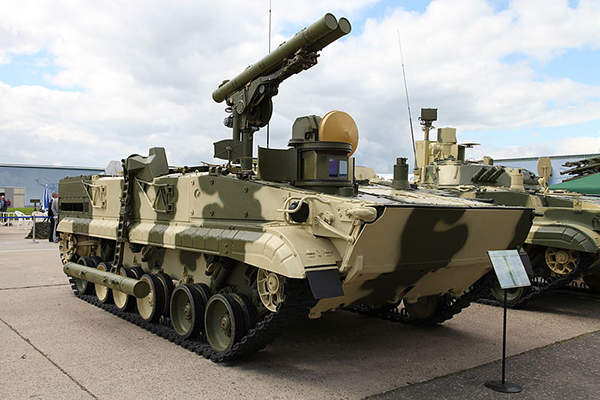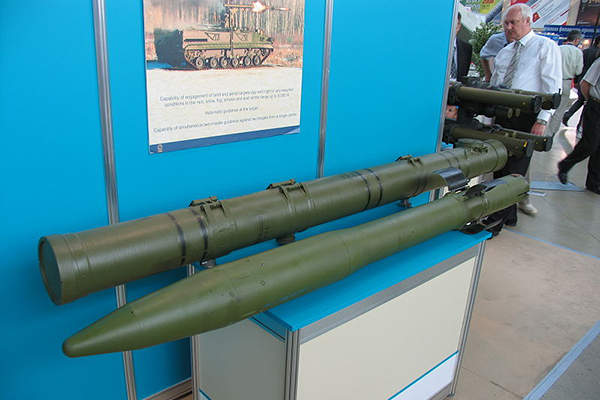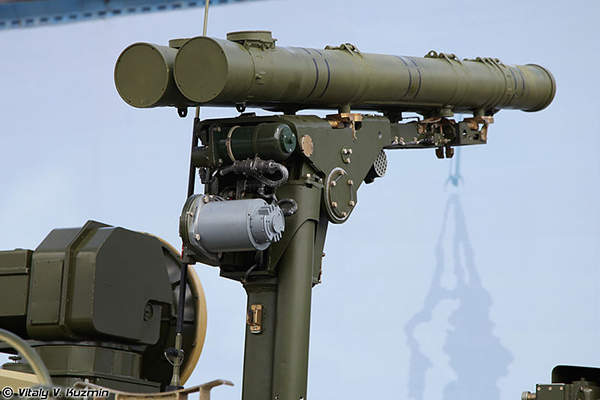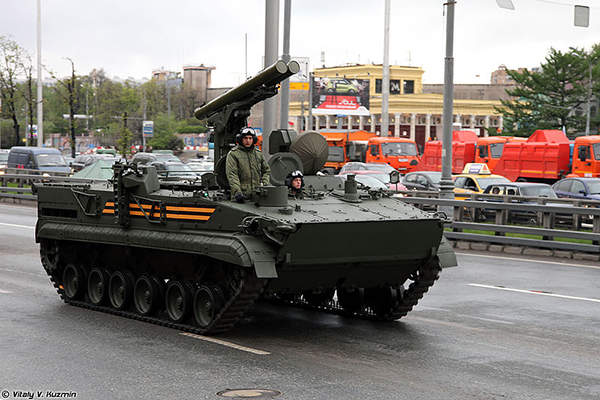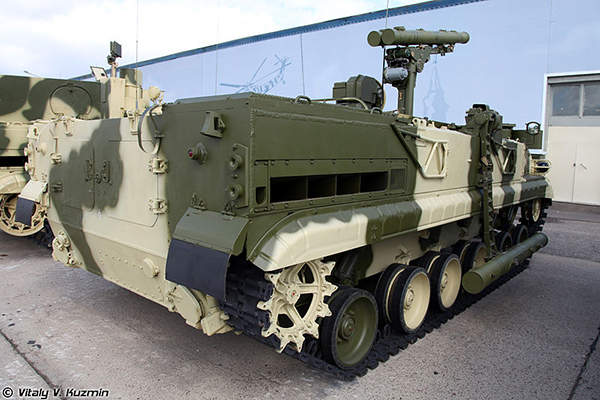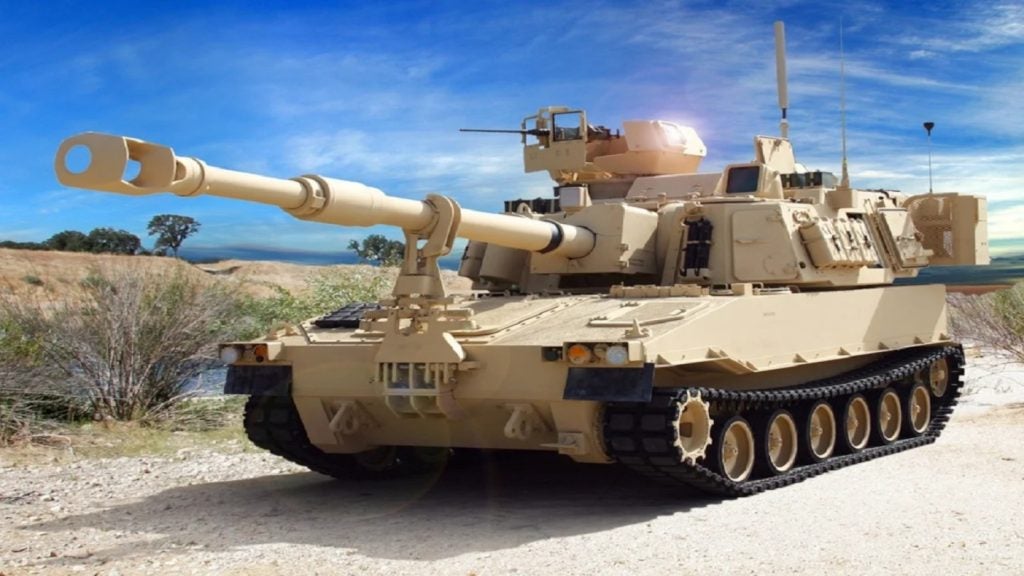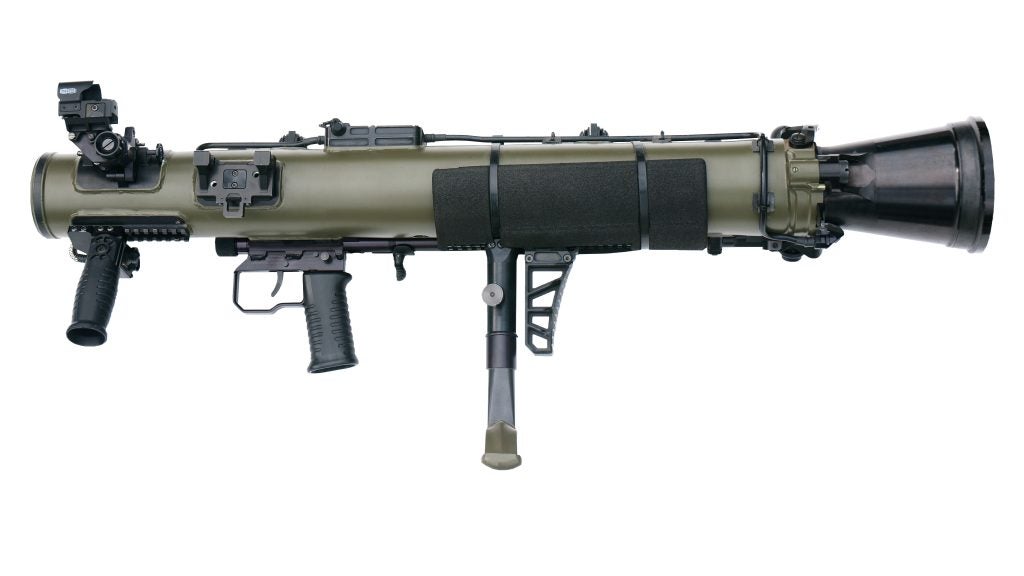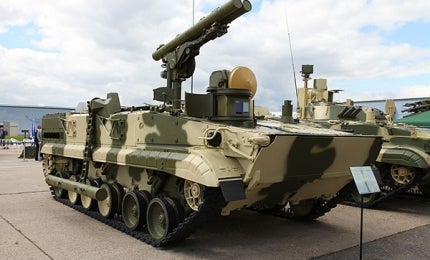
The Khrizantema-S multi-purpose, self-propelled, anti-tank guided weapon (ATGW) system developed by JSC KBM Engineering Design Bureau entered service with the Russian Army in 2005.
The Khrizantema-S ATGW is designed to detect and destroy the existing and future main battle tanks (MBTs), armoured tanks, low-flying aerial targets, lightweight surface targets, and field fortifications, including steel shelters and bunkers, in both day and at night under all weather conditions. It offers high-rate of fire and is protected against electronic countermeasures.
In November 2012, the Russian Armed Forces’ Southern Military District artillery units in the Republic of Ingushetia received ten Khrizantema-S weapon systems for the replacement of Shturm-S anti-tank missile systems. The artillery units took delivery of an additional three systems in 2013.
The Khrizantema-S missile system was demonstrated to the UAE Ministry of Defence during the IDEX 2015 International Defence Exhibition & Conference. A full-scale sample machine ATGW mounted on a 9P157-3 platoon commander’s combat vehicle took part in the Russia Arms Expo 2015 exhibition held in Moscow.
Khrizantema-S ATGW variants
The basic 9K123 Khrizantema-S anti-tank, guided weapon system components include a combat vehicle, anti-tank guided missiles, test vehicles, test equipment and a set of instructional charts. The modernised 9K123-1 Khrizantema-S missile system features platoon commander’s combat vehicle and 9P157-4 battery commander’s combat vehicle along with the basic system components.
Missiles
The Khrizantema-S system features 9M123 and 9M123F supersonic anti-tank guided missiles with a firing range between 400m and 6,000m and an altitude of 3km above sea level.
The 9M123 missile has 9N146-1 tandem high-explosive, anti-tank warhead, whereas the 9M123F missile is fitted with 9N146F high-explosive warhead. The canistered missile measures 2.3m-long and weighs 62kg.
The ATGW system also features 9M123 Prakt practice missile, 9M123 Maket training missile, 9M123 Uchebn training missile, 9M123 Razr cut-away training missile, 9F734 training target and 9M123F Razr cut-away training missile.
Fire control
A dual-mode automatic guidance and control system, consisting of a radio receiver and a photodetector, provides automatic radio beam or semi-automatic laser beam riding.
Chassis
The 9K123 Khrizantema-S ATGW is mounted on a 9P157 combat vehicle that uses assemblies and units of the BMP-3 infantry fighting vehicle (IFV). It accommodates two crew members and is integrated with a radar control system (RCS) and an optical and laser control system.
The 9K123-1 Khrizantema-S weapon system uses 9P157-2 combat vehicle, 9P157-3 platoon commander’s combat vehicle and 9P157-4 battery commander’s vehicle. The 9P157-2 has two crew members, whereas the 9P157-3 is operated by three persons. The 9P157-2 and 9P157-3 vehicles are equipped with a RCS and a thermal imaging and TV control device. The 9P157-4 battery commander’s vehicle, based on the BMP-3 IFV chassis, is manned by four crew members.
The new Kurganets-25 (Object 695) fully-amphibious infantry fighting vehicle (IFV) was unveiled at the Moscow Victory Day Parade in May 2015.
Up to 15 9M123 and 9M123F missiles can be carried on each of 9P157, 9P157-2 and 9P157-3 vehicles, with a launch rate of four missiles a minute. The missiles are automatically loaded into a retractable launcher, thereby enabling simultaneous launch of two missiles at two different targets.
The combat vehicle can travel at a speed of 70km/h.
Mobile test station
The 9K123 Khrizantema-S has two mobile test stations (9V990 and 9V945). The 9V990 mobile test station (MTS), based on a Ural-4320 type truck, performs scheduled functional checks of 9M123, 9M123F, 9M123 Uchebn and 9M123 Prakt missiles at the time of operation and storage.
Featuring K5350 box body, the 9V990 MTS uses 9V981 test equipment to check the parameters of 15 missiles an hour. It has one driver and one operator, and has an operating time of eight hours.
The 9V945 MTS, based on a KamAZ 5350 type truck, is intended for maintenance of the 9P157 combat vehicle. It features К5350 box body and uses 9V991 test equipment. The MTS has two crew members including a driver and an operator, and has an operating time of eight hours.
The 9K123-1 Khrizantema-S ATGW also has two mobile test stations, 9V990-1 and 9V945-1, manned by one driver and two operators each. The 9V945-1 station is used to conduct functional checks of the 9P157-2 and 9P157-3 combat vehicles.
The Global Armoured Vehicles and Counter-IED Vehicles Market 2011-2021
This project forms part of our recent analysis and forecasts of the global armoured vehicles and counter-IED vehicles market available from our business information platform Strategic Defence Intelligence. For more information click here or contact us: EMEA: +44 20 7936 6783; Americas: +1 415 439 4914; Asia Pacific: +61 2 9947 9709 or via email.

